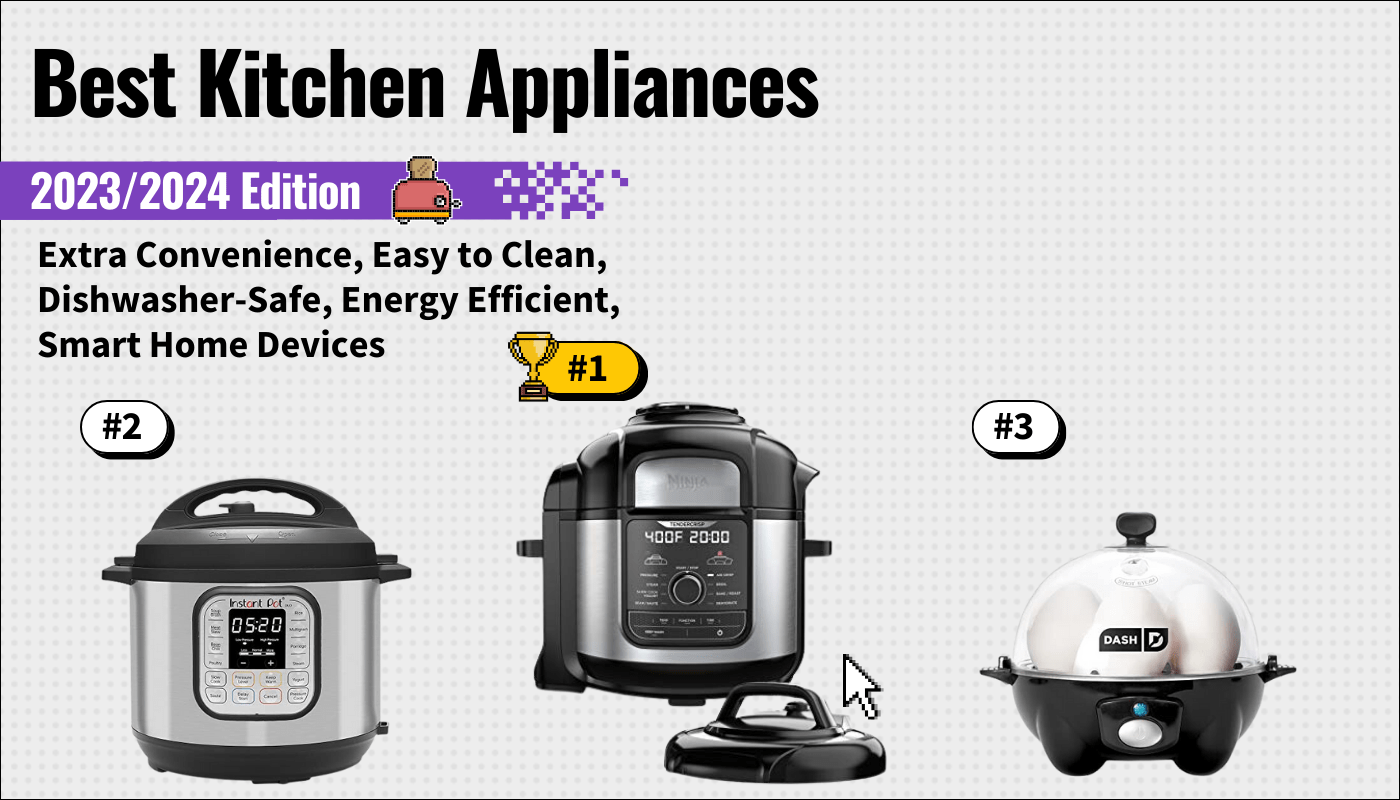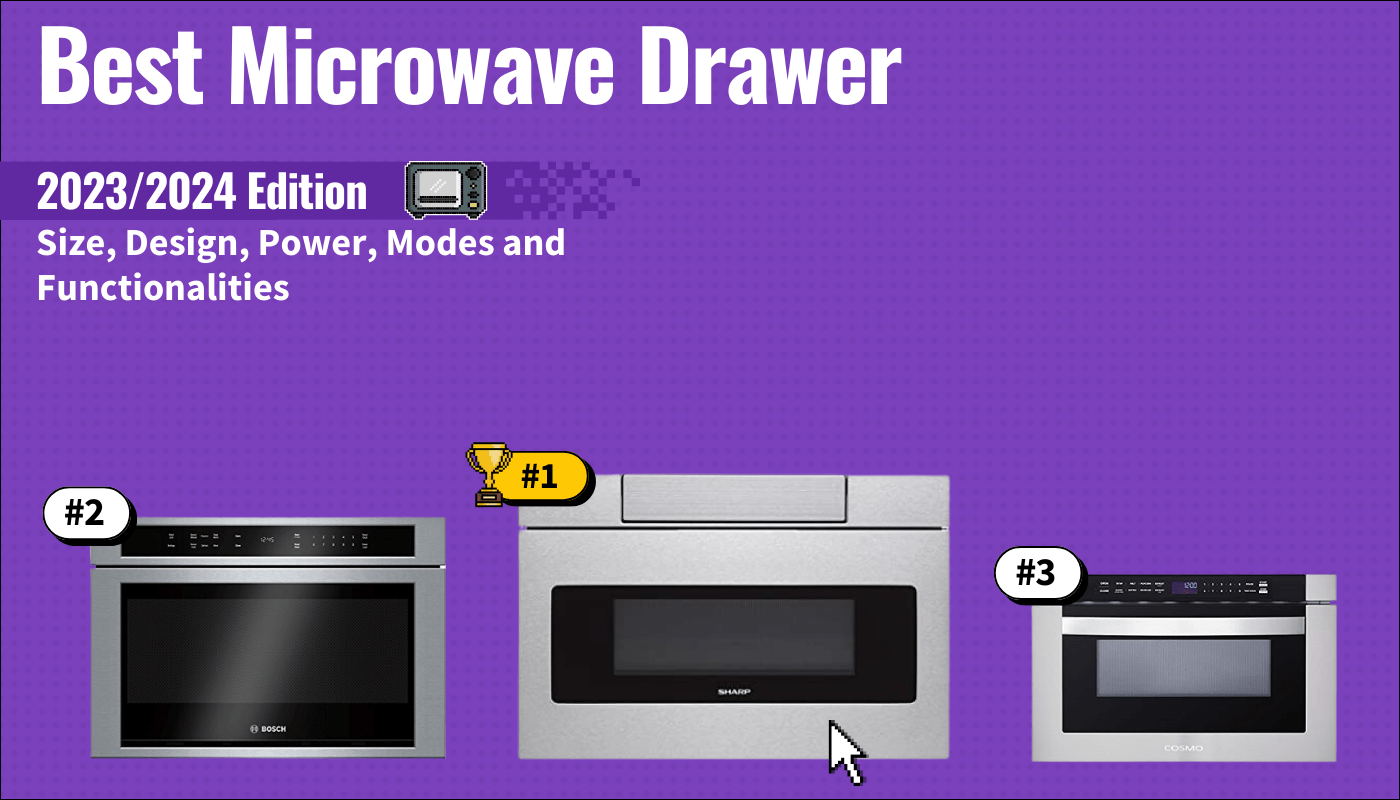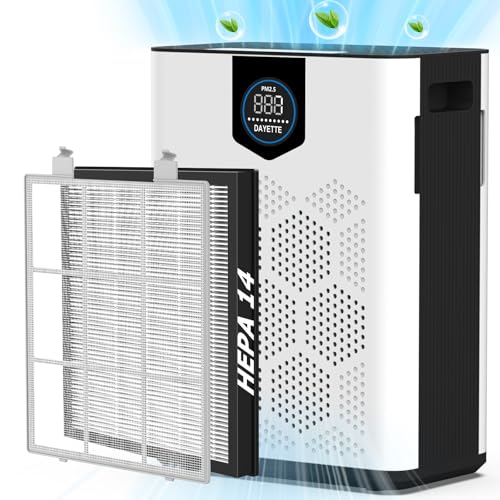To find the microwave toaster oven combo, you’ll need to determine the features that are right for you and your kitchen space. We recommend that you favor ovens with true hybrid functionalities, excelling at both toasting, baking, and microwaving, or at the very least offering up cooking speeds in line with microwaving. Make sure to also consider how powerful the oven actually is and how much space is available for ingredients. When buying a microwave toaster oven combo, always look for a durable build, plenty of internal room, and a powerful and versatile heating element.
After analyzing hundreds of reviews amongst a multitude of products with varying price points and features, we’ve determined that the Breville BOV800XL Smart is the best microwave toaster oven combo on the market today. If you’re looking for more great products like this, then check out our best toaster oven buying guide.
Top 10 Microwave Toaster Oven Combos
#1 Breville BOV800XL Smart Microwave Toaster Oven Combo
Award: TOP PICK
WHY WE LIKE IT: Fantastic all-around choice for most families, with five quartz heating elements that cook as quickly as a traditional microwave, with a backlit LCD screen for easy programming and timer setting.
- Generous maximum capacity
- Backlit LCD screen for easy programming
- 1800w 5 quartz heating elements
- Exterior can get hot during use
- Non-stick interior may not suit all consumers
This Breville microwave toaster oven combo is a great choice for those who want microwave-like speedy results while allowing for toasting, broiling, baking, and other cooking functions. The cooking is spread across five quartz heating elements, adding up to 1800 watts of cooking power. We loved the generous maximum capacity here, which can easily hold six pieces of toast, and the backlit LCD screen, allowing for easy programming and timer setting.
Due to the convection-based design, the exterior can get pretty hot during use, so we’d recommend caution and to make sure you leave a few inches of space between the oven and the wall. Additionally, the non-stick coating throughout the interior helps with cleaning, but may not suit consumers who are sensitive to certain chemical compounds.
#2 Samsung MG11H2020CT Countertop Grill Microwave
Award: HONORABLE MENTION
WHY WE LIKE IT: Great choice for quick microwave-friendly recipes, with a convection-based heating option for air frying and shipping with a grilling plate for making pizza and crispier-than-average foods.
- Scratch-resistant ceramic enamel interior
- Includes grilling rack and plate for crispy foods and pizza
- 1000 watts of power
- Not the largest interior capacity
The Samsung MG11H2020CT Countertop Grill Microwave is a powerful model that offers microwave cooking and convection-based cooking, the latter allowing for air frying, toasting, and more. We loved the scratch-resistant and nonstick interior, adding to the durability and ease-of-cleanup. We also appreciated the premium mirrored black matte aesthetic, which should suit the needs of nearly any kitchen.
This is a somewhat heavy microwave toaster oven, however, clocking in at 35 pounds, which could be an issue when it comes time to change up the kitchen scheme. Also, the internal capacity is somewhat lacking.
#3 Instant Pot Omni Plus Microwave Toaster Oven Combo
Award: BEST FOR BAKING
WHY WE LIKE IT: Great choice for baking enthusiasts, as this model boasts specialized presets for baking cakes and related items, with a durable stainless steel form factor, and a generous 26L maximum capacity.
- Generous maximum capacity
- Ships with rotisserie spits, forks, and lift
- 10 smart programs for variety of recipes
- Somewhat expensive
- Weighs about 30lb
The Instant Pot Omni Plus Microwave Toaster Oven Combo is the perfect choice for those who tend to enjoy baking cakes and related foodstuffs, as this air fryer combo unit features a number of presets intended for baking cakes, cupcakes, pie crusts, and more. We loved the generous 18-liter maximum capacity here and a series of smart programs for a wide array of different recipes. This model also ships with everything you need to make rotisserie chicken, including rotisserie spits, rotisserie forks, and more.
This is a fairly heavy combo oven, so take that into consideration before making a purchase. Also, the price here is higher than some competitors, likely due to the versatility on offer and the above-average components. You might also like the best kitchen appliances buying guide for more accessories.
#4 Panasonic NN-GN68K Microwave Toaster Oven Combo
Award: BEST PRESET OPTIONS
WHY WE LIKE IT: Versatile combo oven with a bevy of auto-cook preset options, a powerful infrared heating element, a child lock for safety, and a uniquely designed rack for broiling.
- Powerful infrared heating element
- Child lock for added security and safety
- Specially designed broiling rack
- On the expensive side
- Weighs 35lb
The Panasonic NN-GN68K Microwave Toaster Oven Combo is perfect for home cooks who value simplicity, as this model boasts a large array of auto-cook preset options, including a built-in timer. We loved the powerful infrared heating element, which offers speedy results in line with a microwave, and the specially designed broiling rack. This microwave combo oven also includes an integrated child lock, adding some peace of mind to busy families.
This is a fairly expensive convection toaster oven, however, likely due to the unique design and high-grade components. Additionally, this is a fairly heavy model, clocking in at around 35 pounds.
#5 Galanz SpeedWave Microwave Toaster Oven Combo
Award: BEST VERSATILITY
WHY WE LIKE IT: Extremely versatile combo oven that can microwave, toast, air fry, and just about anything else you need in the kitchen, with a durable stainless steel alloy build and a built-in humidity sensor for precise results.
- Built-in humidity sensor for precision
- Made with durable stainless steel alloy
- Ships with high-grade baking and roasting kit
- Weighs over 40lb
- Fairly expensive
The Galanz SpeedWave Microwave Toaster Oven Combo is a great choice for those looking to save some precious counter space, as this model offers an air fryer, a microwave, and a convection-based toaster all-in-one, allowing for unparalleled cooking versatility. We loved the durability on offer here, thanks to a stainless steel alloy design, and the fact that it ships with a high-grade baking and roasting kit. We also appreciated the built-in humidity sensor, allowing for perfect and moist cooking results.
This is a fairly expensive toaster microwave oven, thanks to the versatile nature of the design. Also, this is also a fairly heavy unit, coming in at a little over forty pounds, meaning it could be a struggle to move it around the kitchen at will.
#6 Black+Decker Microwave Toaster Oven Combo
Award: BEST ON A BUDGET
WHY WE LIKE IT: Budget-conscious combo oven with a beefy feature set, including a light and portable form factor, weighing just 8lb, and a convection heating element that offers speedy and precise results.
- Light and portable form factor
- Convection-based heating element for speedy results
- Integrated timer with automatic shutdown
- Exterior gets extremely hot during use
- Plastic components are not that durable
This Black+Decker Microwave Toaster Oven Combo is available at a budget-friendly price while offering some interesting and highly useful features, such as a light and portable form factor, as this oven weighs just over eight pounds. We appreciated the powerful convection-based heating element here, allowing for speedy results in line with a traditional microwave. We also liked the integrated 30-minute timer that can be programmed to automatically shut down after completion or to keep going, for longer bakes.
The exterior of this oven gets extremely hot during use, due to the convection-based design, so we’d advise caution. Also, many of the components here are made from plastic, which offers significantly less durability than models made from stainless steel and composite alloys.
#7 Sharp R1881LSY Microwave Toaster Oven Combo
Award: BEST QUALITY
WHY WE LIKE IT: Best over the range microwave toaster oven combo, with a powerful 850w convection-based heating element, durable stainless steel components, and a handy interactive display for programming.
- Multi-color interactive display
- Durable stainless steel components
- Powerful convection-based heating element
- Installation can be difficult
- Extremely expensive
The Sharp R1881LSY Microwave Toaster Oven Combo is of exceptional quality, boasting a number of high-grade features including a handy multi-color interactive display for easy programming and timer setting. We appreciated the durable and aesthetically-pleasing stainless steel components and the powerful 850-watt convection-based heating element, which excels at microwaving, toasting, baking, broiling, air frying, and more.
Due to the nature of the over-the-range design here, the installation procedure can be somewhat frustrating, though all of the necessary components come with the initial purchase. Additionally, this is an extremely expensive model, likely due to the company’s good reputation for making high-grade microwaves and toasters.
#8 KitchenAid KCO211BM Microwave Toaster Oven Combo
We’re sorry, this product is temporarily out of stock
Award: BEST PRECISION COOKING
WHY WE LIKE IT: Ships with a built-in temperature probe, allowing for ultra-precise cooking that results in perfectly prepared recipes, in addition to offering a pair of convection-based heating elements for speedy prep.
- Ultra-generous max capacity
- Attractive black matte design
- Pair of powerful convection-based heating elements
- Non-stick interior may not suit all consumers
- Bulky form factor
This Kitchenaid microwave toaster oven combo is a great choice for recipes that demand precision and exacting preparation, as this model comes with a built-in temperature probe that gives accurate readings as to just how hot the interior of the oven is at any given moment. We loved the generous maximum capacity here, which is enough for two whole chickens to be roasted simultaneously, and a pair of powerful convection-based heating elements. This is also an attractive convection microwave, with a gorgeous black matte exterior.
Though the large capacity is a definite plus with this model, it does contribute to a bulky form factor that could struggle to fit in smaller kitchen spaces. Also, the non-stick interior makes this oven easy to clean, but consumers who are sensitive to certain chemicals may not be pleased.
#9 Emerson Griller Microwave Toaster Oven Combo
Award: BEST VALUE
WHY WE LIKE IT: Value-friendly oven combo with some robust features, such as an integrated 99-minute timer with auto-shutdown and 12 versatile power options to suit nearly any microwave or grill-based cooking task.
- 12 versatile power levels
- Durable stainless steel components
- Built-in 99-minute timer and child-safe lock
- Weighs nearly 40lb
- Included power cable on shorter side
The Emerson Griller Microwave Toaster Oven Combo arrives at a value-conscious price while offering features in line with more expensive competitors, such as a bevy of highly useful power preset levels, which are perfect for both microwaving and grilling. We loved the integrated 99-minute timer, which included the ability to automatically shut down when the timer has gone off. We also liked the durable stainless steel components here, offering both aesthetics and security.
This is not the most portable toaster microwave on the market, as it weighs nearly 40 pounds. Additionally, the included power cord here is on the shorter side, coming in at just three feet long.
#10 Nostalgia RTOV2AQ Microwave Toaster Oven Combo
Award: BEST AESTHETICS
WHY WE LIKE IT: Extremely attractive retro-style design, with a pair of wire racks that effectively double the maximum capacity, allowing for 12 slices of bread or two 12” pizzas to be cooked simultaneously.
- Multiple racks for large max volume
- Relatively light and compact form factor
- Baking pans, crumb tray, and racks removable for easy cleanup
- Exterior can get really hot during use
- Aluminum exterior not as durable as steel
The Nostalgia RTOV2AQ Microwave Toaster Oven Combo is an aesthetically pleasing model that is sure to please those who gravitate towards retro-inspired designs. We loved the pair of wire racks included with this model, effectively doubling the maximum capacity and allowing up to twelve pieces of toast or two 12-inch pizzas to be cooked at the same time. We also appreciated the light and compact form factor, weighing under 20 pounds, and the fact that all of the internal components can be removed for easy cleanup.
Due to the convection-based design, the exterior of this oven can get plenty hot during use, so we’d advise a measure of caution. Additionally, many of the components here are made from aluminum alloy, which is sturdy but not as durable as stainless steel. If you prefer something smaller, the best small toaster oven could be a better option for you.
How We Decided
To help narrow down to the above list, we thoroughly researched a large number of microwave toaster oven combo units, ensuring that they excelled as both toasters and microwave ovens instead of having to have separate appliances. To that end, we ended up choosing ovens with convection-based heating elements, as this type of heating element typically provides speedy results in line with what one would find with a traditional microwave. Don’t forget to check out our page explaining the differences between a toaster oven vs a microwave.
We preferred high-quality microwave toaster combo ovens with plenty of versatility, allowing for simple microwaving and toasting tasks, in addition to grilling, broiling, air frying, and more. We loved ovens with generous internal capacities for the purposes of cooking large family-sized meals. We also tended to choose models that were easy-to-clean via nonstick internal components or machine-washable trays and racks.
As for simplicity, we liked these versatile appliances with plenty of presets and programming functions, so consumers can just push a button or two to start the cooking process for their favorite foods. Finally, we liked durable ovens, often made from stainless steel and related alloys, and those with built-in timers and childproof locks.
Best Microwave Toaster Oven Combo Buyer’s Guide
The Most Important Features to Consider
- Heating Elements
When considering which microwave toaster oven combo unit to purchase, the heating elements should be of paramount importance. Additionally, the best toaster oven air fryer should be large enough and have a powerful heating element in order to accommodate larger items. It won’t be as big as a regular oven, but it should ideally fit bigger foods.- Look for a model with a powerful and versatile heating element that can create plenty of heat, at least 450F. Moreover, the best microwave combo should be energy efficient and cook food quickly without wasting too much electricity.
- You will also want to consider a toaster with an integrated broiler or grill function for cooking versatility, and one with multiple rack positions, further upping the number of food items you can easily create.
- In fact, if you’re looking for the best microwave toaster oven air fryer combo with the best performance, consider a unit with multiple cooking settings and convection technology. This will give you the perfect option that’s the best of both worlds in one kitchen appliance.
- A setting for various cooking times is important too. Remember to compare models by looking at microwave toaster oven combo reviews.
- Be sure to check out the various types of heating on offer as well, as these units should boast both convection-based technology and circulation-based options, in addition to traditional microwave-based and traditional oven designs.
- Presets and Controls
You will want an easy-to-use microwave toaster oven combo, so look for simple and intuitive controls, via a heavy-duty rotary dial or an easy-to-read digital control panel with an LED display.- For instance, if you’re looking for the best toaster oven air fryer combo, look for models that offer both air frying and convection baking.
- As for presets, these models tend to include a number of useful program functions to suit a variety of recipes. These presets can do wonders for popcorn, toast, chicken, frozen foods, pizza, and much more.
- Therefore, if you’re looking for a great microwave and toaster oven combo that can handle all your cooking needs, be sure to find one with plenty of preset functions and power settings.
- Additional Features
Modern microwave toaster oven combo models typically boast a bunch of additional features, such as removable crumb trays for easy cleaning and a series of other dishwasher-safe components. As a matter of fact, the best toaster air fryer combo models will also offer an adjustable temperature dial, allowing you to select the best level of heat for cooking a variety of dishes.- Some of these ovens can even excel at preparing rotisserie chicken, via integrated rotisserie baskets, rotisserie spits, rotisserie forks, and related accessories.
- Other models also include built-in timers and the capacity to automatically shut down when finished cooking, while others offer childproof locks for security and peace of mind.
- If you live in a small space like a studio apartment or dorm room, you should consider the dimensions as well to find a compact design that fits your space.
- Consider how easy the countertop appliance is to clean, since adequate maintenance will extend the longevity of your combination microwave oven. Usually a simple damp cloth is enough to wipe down your appliance after every use.
How To Choose A Microwave
When choosing a microwave, consider:
- Its placement in your kitchen, such as above the oven or on the counter.
- Measure the available space to determine the size of the microwave you need.
- Think about whether you require additional features like convection or inverter heating.
- Wattage is important too, with most home microwaves ranging from 600-1000 watts, while commercial models may offer more power.
- Additionally, assess if you need special features like sensor cooking or voice commands.
- Prices vary widely, with basic models starting around $50 and more advanced ones costing up to $2000 for commercial use.
How are the Sizes of Microwaves Measured?
Choosing the right size for a microwave is crucial, depending on where you plan to place it in your kitchen and the amount of space available. Microwaves are measured in both external and internal dimensions, with internal capacity often expressed in cubic feet. It’s important to measure both the space where you’ll place the microwave and the microwave itself to ensure a proper fit.
Additionally, consider the microwave’s wattage, as higher wattages typically cook food faster, and think about any special features you may need, like sensor cooking or smart functionalities.
Effective Maximum Microwave Temperature
In a microwave oven, the food or liquid being heated can reach a maximum temperature of 212 degrees Fahrenheit, the boiling point of water. It’s possible, although dangerous, to superheat water in a microwave up to 248 degrees Fahrenheit under certain conditions.
Microwaves heat food by exciting water molecules, meaning the oven itself doesn’t get hot. The effective maximum temperature of food in a microwave is typically lower than 212 degrees due to evaporation and uneven heating.
What is Microwave Sensor Cooking?
Microwave sensor cooking uses sensors to adjust cooking time and power levels automatically, ensuring food is cooked precisely without overcooking. These sensors detect moisture and steam emitted from food, allowing the microwave to gauge how much cooking is necessary.
Sensor cooking is ideal for foods that require careful temperature control, like vegetables and meats, making it a convenient feature for hassle-free cooking.
How LG Microwaves Compare to Other Brands
LG is considered a popular brand in the microwave market. They are known for their innovative features and quality build. They are often recognized for their modern designs, advanced technology, and reliability.
When comparing LG microwaves to those from other brands, it’s important to consider various factors like design, functionality, price, and model variety to understand the unique strengths and limitations of each.
| Feature | LG Microwaves | Other Brands |
|---|---|---|
| Design | Sleek, modern designs with durable build quality. Stainless steel finish in various models including countertop and over-the-range (OTR) | Various designs, with some brands like Cuisinart offering similar style and features |
| User Friendliness | Some models have unique user interface designs that might require adaptation | Typically more standard user interfaces |
| Functionality | Advanced features like LG NeoChef with smart inverter technology, easy-clean interior, sensor cooking, and larger capacity | Varying levels of functionality, often less advanced than LG |
| Price | Generally higher due to quality and advanced features, but within standard price range for household microwaves | Often more affordable, but might lack LG’s quality and features |
| Model Variety | Specializes in over-the-range models with numerous options, including convection microwaves | Broader range of models including more countertop and drawer options |
| Countertop Models | Fewer countertop options, typically larger with more advanced features | More variety and options in countertop models, including compact sizes |
| Drawer Models | No microwave drawer models available | Availability of drawer models with other brands |
What is the Best Microwave for Dorms?
If you’re a college student choosing a microwave for a college dorm, consider wattage, size, heating method, and controls.
- Opt for at least 700 watts to ensure even cooking.
- Compact countertop models are ideal for saving space.
- While convection and inverter microwaves cook more efficiently, budget-friendly models may use intermittent pulsing.
- Controls are important too; if you’re an avid cook, look for features like auto-cook presets and defrosting.
Remember, smaller microwaves can still be effective and fit well in limited dorm spaces.
Owning a Microwave
How to Discharge A Microwave’s Capacitor
If you’re attempting any repairs on a microwave oven, knowing how to discharge a microwave capacitor is a must beforehand for safety reasons. Microwaves are capable of delivering dangerous shocks and being damaged if not properly discharged.
- First, you’ll need to following tools:
- One flat head screwdriver with rubberized, insulated handles- a torque screwdriver is helpful but not necessary
- Rubberized work gloves
- Needle Nose Pliers with rubberized handles
- If you can use the screwdriver, place the tip or body so it touches both terminals simultaneously. If you need to use the pliers, open the plier’s nose and place one-half of it into each terminal.
- Wait at least 5 seconds and remove the tool. Again, you may see a large spark or hear a fizzling sound. Once you’ve done this, you’ve successfully discharged the capacitor.
A word of caution though: make sure all your tools including your gloves are rubberized before attempting a capacitor discharge, or you risk a serious shock.
How to Fix a Microwave Door
Repairing a microwave door switch involves several steps, including:
- Take safety precautions like unplugging the microwave and discharging its electrical components.
- Remove the grill and control panel.
- Extract the defective switch.
- Install a new one.
Care is needed to avoid damaging wires and to ensure the replacement switch matches the microwave model. Reassembly requires reversing the disassembly steps. It’s crucial to prioritize safety and consider professional assistance if unsure about the repair process.
How to Set Microwave Power Levels
Setting the power level on a microwave is crucial for cooking or heating food evenly and appropriately. This process involves a few steps:
- First, set the cooking time using the designated time button.
- Then, press the power button and select the desired level of power, typically ranging from 1-10.
- Different foods require different power levels; for example, maximum power is suitable for heating drinks or vegetables, while defrosting requires 30% power or lower.
- After selecting the power level, start the heating cycle.
It’s important to remember that dense foods generally need lower power levels compared to thinner items.


















